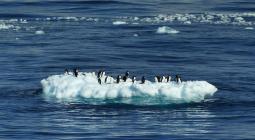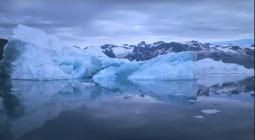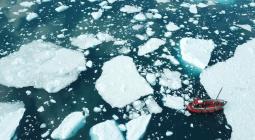The tipping points at the heart of the climate crisis

Many parts of the Earth’s climate system have been destabilised by warming, from ice sheets and ocean currents to the Amazon rainforest – and scientists believe that if one collapses others could follow.
The warning signs are flashing red. The California wildfires were surely made worse by the impacts of global heating. A study published in July warned that the Arctic is undergoing “an abrupt climate change event” that will probably lead to dramatic changes. As if to underline the point, on 14 September it was reported that a huge ice shelf in northeast Greenland had torn itself apart, worn away by warm waters lapping in from beneath.
That same day, a study of satellite data revealed growing cracks and crevassesin the ice shelves protecting two of Antarctica’s largest glaciers – indicating that those shelves could also break apart, leaving the glaciers exposed and liable to melt, contributing to sea-level rise. The ice losses are already following our worst-case scenarios.
These developments show that the harmful impacts of global heating are mounting, and should be a prompt to urgent action to cut greenhouse gas emissions. But the case for emissions cuts is actually even stronger. That is because scientists are increasingly concerned that the global climate might lurch from its current state into something wholly new – which humans have no experience dealing with. Many parts of the Earth system are unstable. Once one falls, it could trigger a cascade like falling dominoes.
Tipping points
We have known for years that many parts of the climate have so-called tipping points. That means a gentle push, like a slow and steady warming, can cause them to change in a big way that is wholly disproportionate to the trigger. If we hit one of these tipping points, we may not have any practical way to stop the unfolding consequences.
The Greenland ice sheet is one example of a tipping point. It contains enough ice to raise global sea levels by seven metres, if it were all to melt. And it is prone to runaway melting.
This is because the top surface of the ice sheet is gradually getting lower as more of the ice melts, says Ricarda Winkelmann of the Potsdam Institute for Climate Impact Research in Germany. The result is familiar to anyone who has walked in mountains. “If we climb down the mountain, the temperature around us warms up,” she says. As the ice sheet gets lower, the temperatures at the surface get higher, leading to even more melting. “That’s one of these self-reinforcing or accelerating feedbacks.”
We don’t know exactly how much warming would cause Greenland to pass its tipping point and begin melting unstoppably. One study estimated that it would take just 1.6C of warming – and we have already warmed the planet 1.1Csince the late 19th century.
The collapse would take centuries, which is some comfort, but such collapses are difficult to turn off. Perhaps we could swiftly cool the planet to below the 1.6C threshold, but that would not suffice, as Greenland would be melting uncontrollably. Instead, says Winkelmann, we would have to cool things down much more – it’s not clear by how much. Tipping points that behave like this are sometimes described as “irreversible”, which is confusing; in reality they can be reversed, but it takes a much bigger push than the one that set them off in the first place.
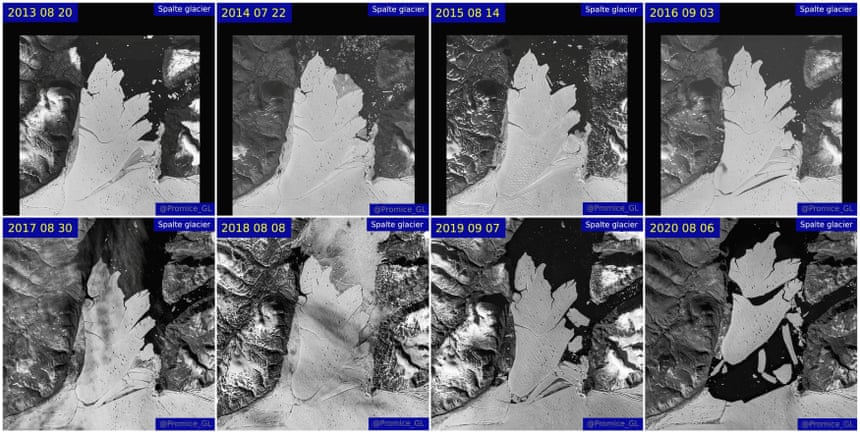
In 2008, researchers led by Timothy Lenton, now at the University of Exeter, catalogued the climate’s main “tipping elements”. As well as the Greenland ice sheet, the Antarctic ice sheet is also prone to unstoppable collapse – as is the Amazon rainforest, which could die back and be replaced with grasslands.
A particularly important tipping element is the vast ocean current known as the Atlantic meridional overturning circulation (AMOC), which carries warm equatorial water north to the Arctic, and cool Arctic water south to the equator. The AMOC has collapsed in the past and many scientists fear it is close to collapsing again – an event that was depicted (in ridiculously exaggerated and accelerated form) in the 2004 film The Day After Tomorrow. If the AMOC collapses, it will transform weather patterns around the globe – leading to cooler climates in Europe, or at least less warming, and changing where and when monsoon rains fall in the tropics. For the UK, this could mean the end of most arable farming, according to a paper Lenton and others published in January.
Tumbling dominoes
In 2009, a second study took the idea further. What if the tipping elements are interconnected? That would mean that setting off one might set off another – or even unleash a cascade of dramatic changes, spreading around the globe and reshaping the world we live in.
For instance, the melting of the Greenland ice sheet is releasing huge volumes of cold, fresh water into the north Atlantic. This weakens the AMOC – so it is distinctly possible that if Greenland passes its tipping point, the resulting melt will push the AMOC past its own threshold.
“It’s the same exact principles that we know happen at smaller scales,” says Katharine Suding of the University of Colorado, Boulder, who has studiedsimilar shifts in ecosystems. The key point is that processes exist that can amplify a small initial change. This can be true on the scale of a single meadow or the whole planet.
However, the tipping point cascade is very difficult to simulate. In many cases the feedbacks go both ways – and sometimes one tipping point can make it less likely that another will be triggered, not more. For example, the AMOC brings warm water from equator up into the north Atlantic, contributing to the melting of Greenland. So if the AMOC were to collapse, that northward flow of warm water would cease – and Greenland’s ice would be less likely to start collapsing. Depending whether Greenland or the AMOC hit its tipping point first, the resulting cascade would be very different.
What’s more, dozens of such linkages are now known, and some of them span huge distances. “Melting the ice sheet on one pole raises sea level,” says Lenton, and the rise is greatest at the opposite pole. “Say you’re melting Greenland and you raise the sea level under the ice shelves of Antarctica,” he says. That would send ever more warm water lapping around Antarctica. “You’re going to weaken those ice shelves.”
“Even if the distance is quite far, a larger domino might still be able to cause the next one to tip over,” says Winkelmann.
In 2018, Juan Rocha of the Stockholm Resilience Centre in Sweden and his colleagues mapped out all the known links between tipping points. However, Rocha says the strengths of the interconnections are still largely unknown. This, combined with the sheer number of them, and the interactions between the climate and the biosphere, means predicting the Earth’s overall response to our greenhouse gas emissions is very tricky.
Into the hothouse
The most worrying possibility is that setting off one tipping point could unleash several of the others, pushing Earth’s climate into a new state that it has not experienced for millions of years.
Since before humans existed, Earth has had an “icehouse” climate, meaning there is permanent ice at both poles. But millions of years ago, the climate was in a “hothouse” state: there was no permanent polar ice, and the planet was many degrees warmer.
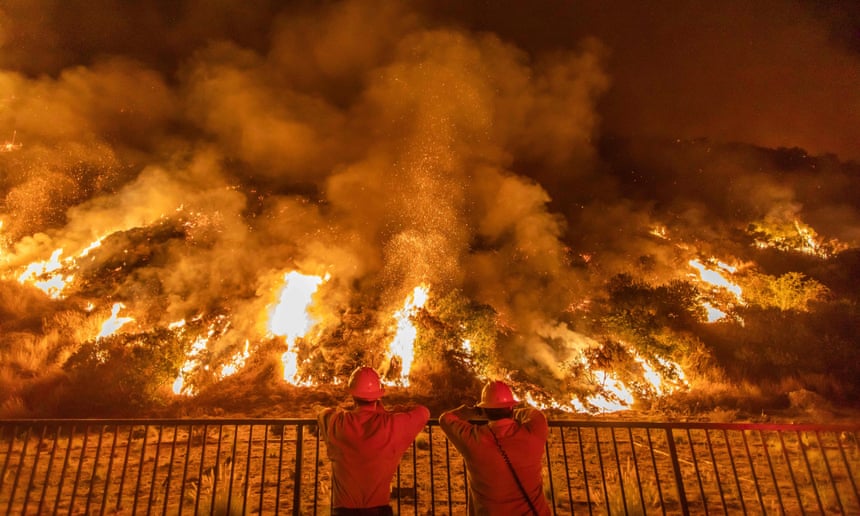
If it has happened before, could it happen again? In 2018, researchers including Lenton and Winkelmann explored the question in a much-discussed study. “The Earth System may be approaching a planetary threshold that could lock in a continuing rapid pathway toward much hotter conditions – Hothouse Earth,” they wrote. The danger threshold might be only decades away at current rates of warming.
Lenton says the jury is still out on whether this global threshold exists, let alone how close it is, but that it is not something that should be dismissed out of hand.
“For me, the strongest evidence base at the moment is for the idea that we could be committing to a ‘wethouse’, rather than a hothouse,” says Lenton. “We could see a cascade of ice sheet collapses.” This would lead to “a world that has no substantive ice in the northern hemisphere and a lot less over Antarctica, and the sea level is 10 to 20 metres higher”. Such a rise would be enough to swamp many coastal megacities, unless they were protected. The destruction of both the polar ice sheets would be mediated by the weakening or collapse of the AMOC, which would also weaken the Indian monsoon and disrupt the west African one.
Winkelmann’s team studied a similar scenario in a study published online in April, which has not yet been peer-reviewed. They simulated the interactions between the Greenland and west Antarctic ice sheets, the AMOC, the Amazon rainforest and another major weather system called the El Niño southern oscillation. They found that the two ice sheets were the most likely to trigger cascades, and the AMOC then transmitted their effects around the globe.
What to do?
Everyone who studies tipping point cascades agrees on two key points. The first is that it is crucial not to become disheartened by the magnitude of the risks; it is still possible to avoid knocking over the dominoes. Second, we should not wait for precise knowledge of exactly where the tipping points lie –which has proved difficult to determine, and might not come until it’s too late.
Rocha compares it to smoking. “Smoking causes cancer,” he says, “but it’s very difficult for a doctor to nail down how many cigarettes you need to smoke to get cancer.” Some people are more susceptible than others, based on a range of factors from genetics to the level of air pollution where they live. But this does not mean it is a good idea to play chicken with your lungs by continuing to smoke. “Don’t smoke long-term, because you might be committing to something you don’t want to,” says Rocha. The same logic applies to the climate dominoes. “If it happens, it’s going to be really costly and hard to recover, therefore we should not disturb those thresholds.”
“I think a precautionary principle probably is the best step forward for us, especially when we’re dealing with a system that we know has a lot of feedbacks and interconnections,” agrees Suding.
“These are huge risks we’re playing with, in their potential impacts,” says Lenton. “This is yet another compulsion to get ourselves weaned off fossil fuels as fast as possible and on to clean energy, and sort out some other sources of greenhouse gases like diets and land use,” says Lenton. He emphasises that the tipping points for the two great ice sheets may well lie between 1C and 2C of warming.
“We actually do need the Paris climate accord,” says Winkelmann. The 2016 agreement committed most countries to limit warming to 1.5 to 2C, although the US president, Donald Trump, has since chosen to pull the US out of it. Winkelmann argues that 1.5C is the right target, because it takes into account the existence of the tipping points and gives the best chance of avoiding them. “For some of these tipping elements,” she says, “we’re already in that danger zone.”
Cutting greenhouse gas emissions is not a surprising or original solution. But it is our best chance to stop the warning signs flashing red.
19 September 2020
The Guardian

